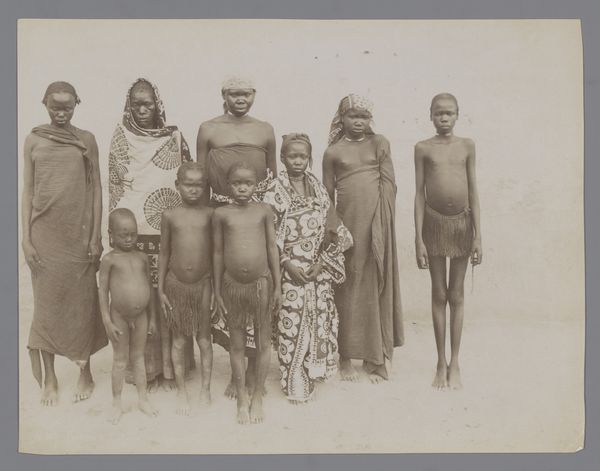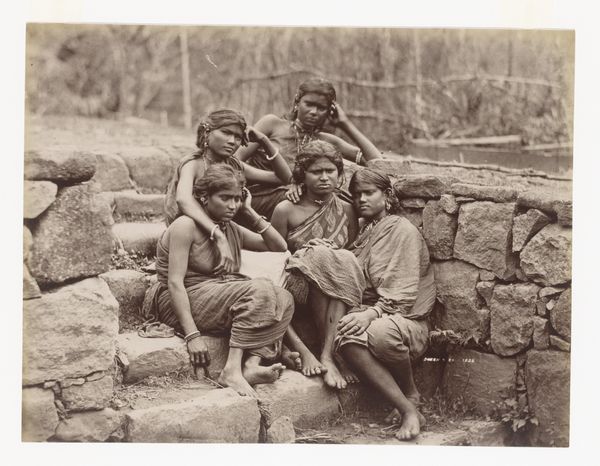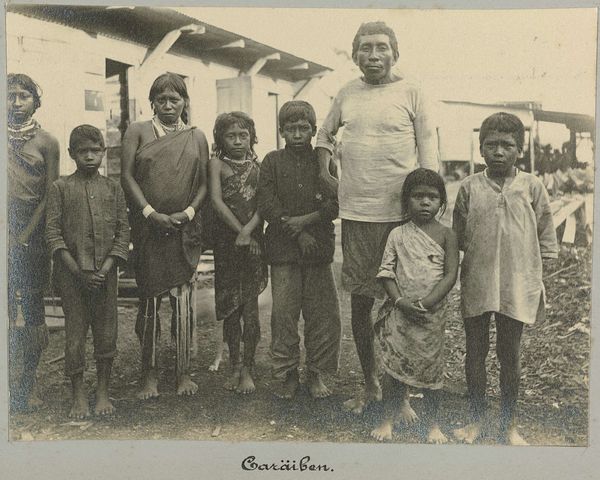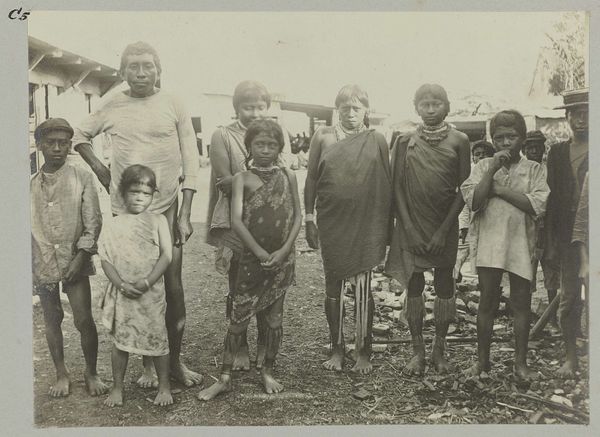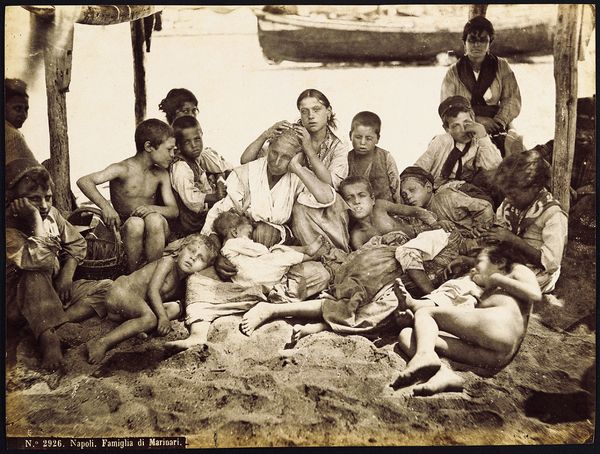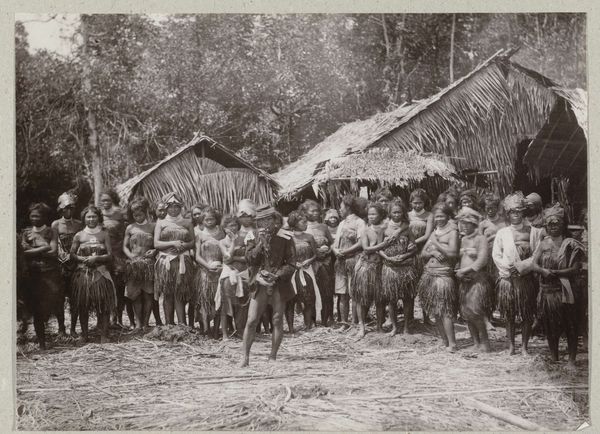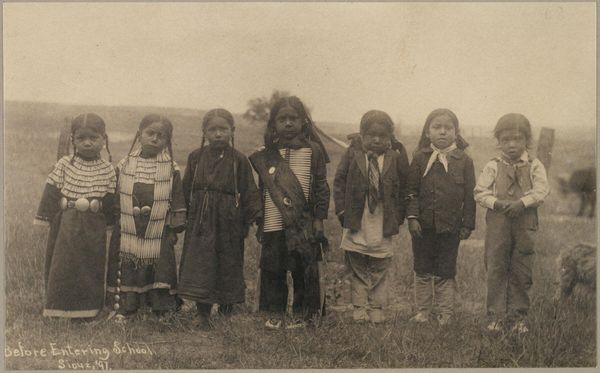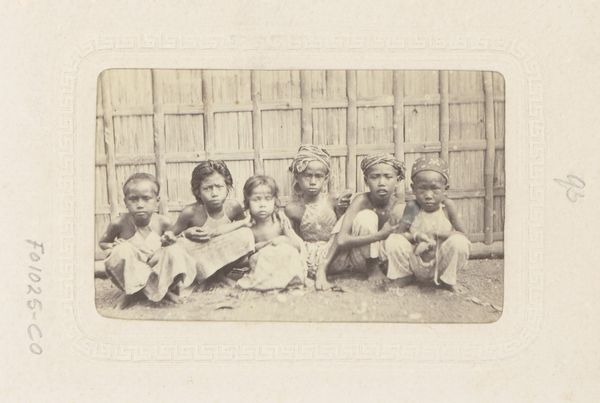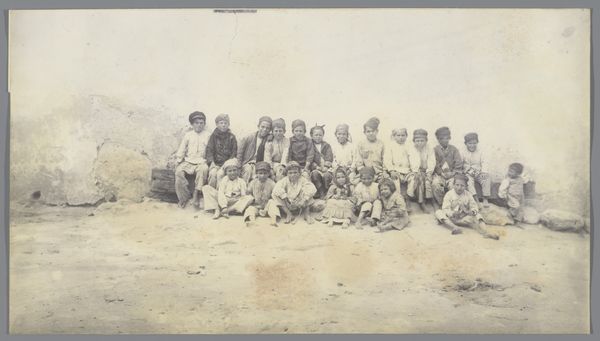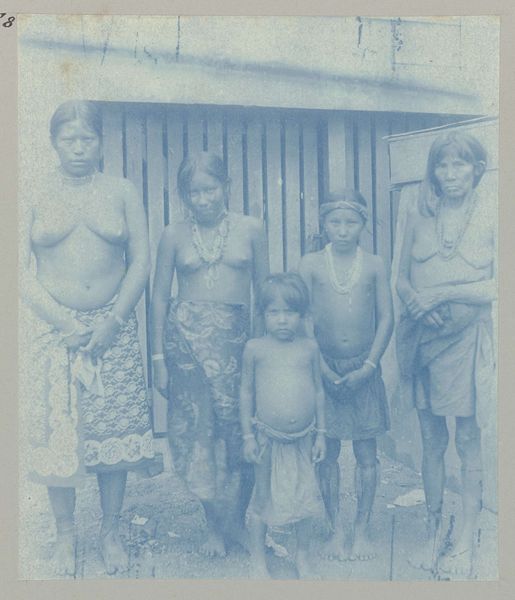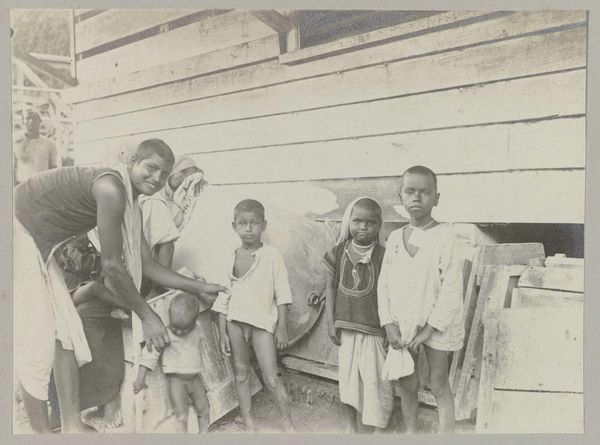
albumen-print, photography
#
albumen-print
#
portrait
#
photography
Dimensions: height 90 mm, width 135 mm
Copyright: Rijks Museum: Open Domain
Curator: This photograph, titled "Kinderen van een Surinaamse familie" and attributed to Eugen Klein, offers a compelling glimpse into a Surinamese family between 1900 and 1910. Editor: The first thing that strikes me is the careful arrangement; it has this formal almost classical portrait feel, yet rendered in such gritty detail. The symmetry of the children holding hands creates a strong horizontal line. Curator: It is a powerful composition. The arrangement speaks to the posed nature of studio portraiture. I am immediately drawn to the context. It's critical to recognize that this image operates within a complex framework of colonial power dynamics. Editor: Agreed. However, by focusing closely on the composition, the tonal range from bright highlights to deep shadows gives a tactile quality, doesn’t it? Look how the texture of the woven roof behind the children contrasts with the smooth skin tones. There is so much depth and richness. Curator: Absolutely, and let's not forget that photographs such as these became instruments in the project of empire. We must also reflect on its circulation. As a photograph from the Rijksmuseum collection, this artwork would be shaped by exhibition and historical contexts of collecting practices in that space. Editor: Do you think the subjects had any agency over their presentation? Were they perhaps attempting to assert some control within the constraints placed upon them? I notice their necklaces, bracelets... Those details create patterns and texture on the figures. Curator: That's an important question. It’s about looking at these artifacts—clothing, jewelry—and considering the conditions of production and consumption that reflect their place in trade, society, and the cultural landscape of Suriname at that moment. The work’s strength also hinges on recognizing that colonial-era portraits involved nuanced negotiations between photographer and subject. Editor: Looking at it this way does alter one's understanding. It underscores the visual complexity beyond the immediate impact of this old photo. Thanks for broadening my view of this historical image. Curator: Indeed. Let us not shy away from these kinds of complex, nuanced interpretations, that allow us to engage with colonial histories critically.
Comments
No comments
Be the first to comment and join the conversation on the ultimate creative platform.
